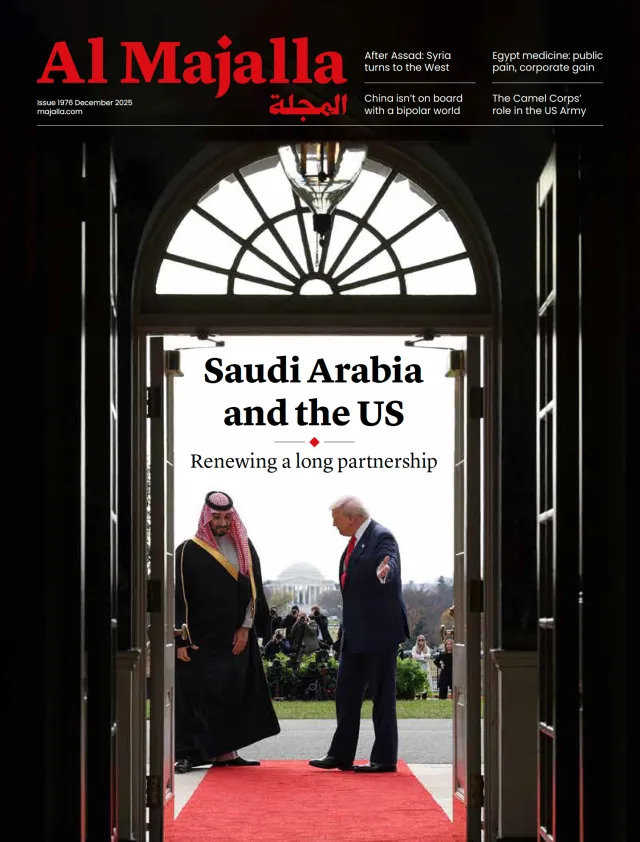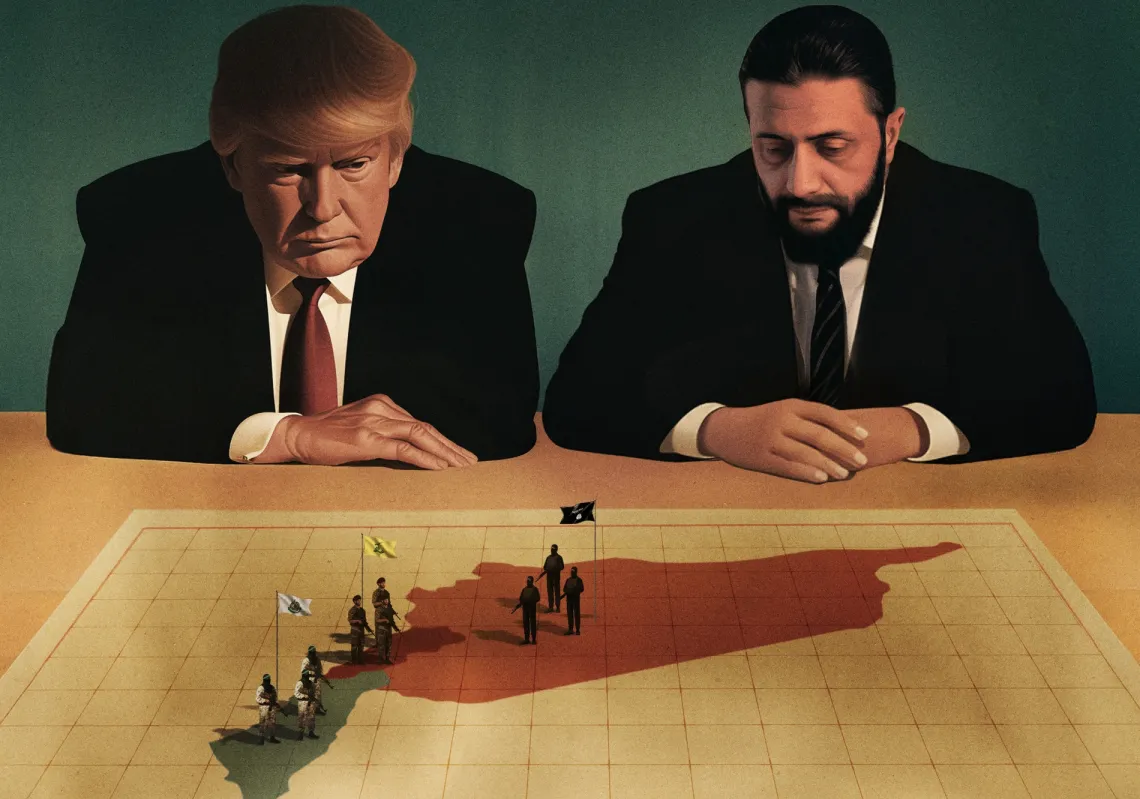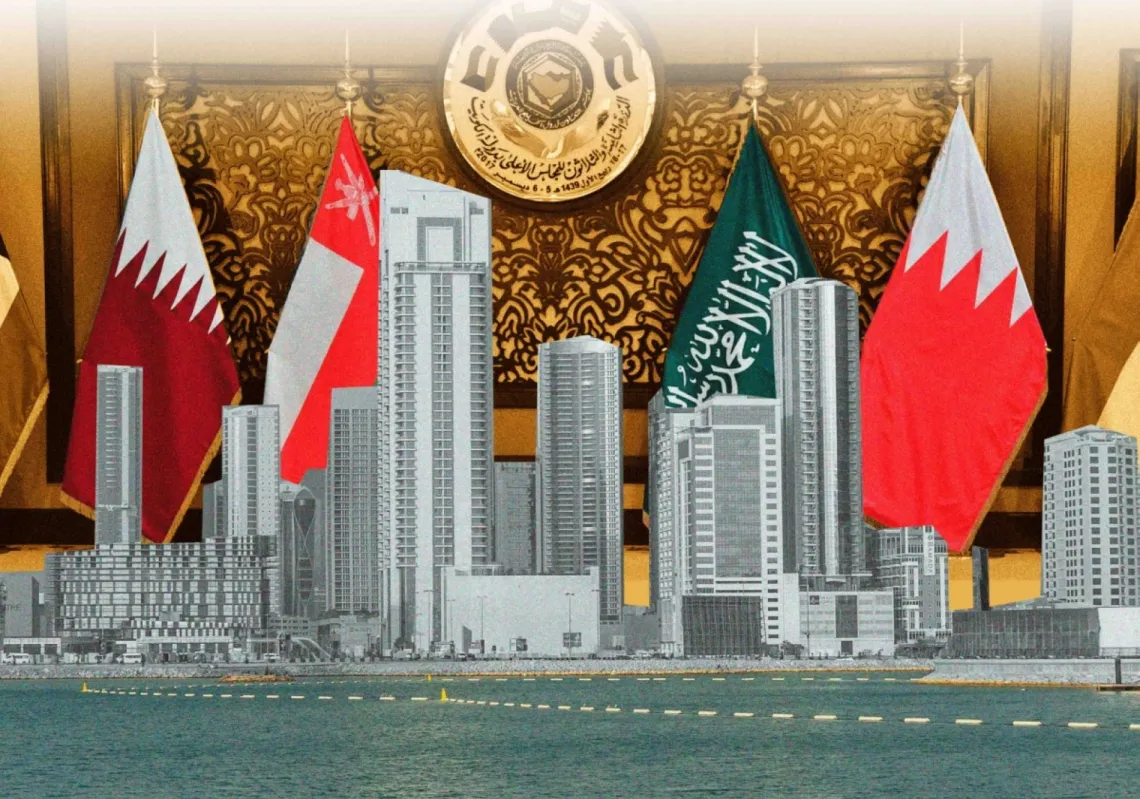On 1 August 1945, Syrian President Shukri al-Quwatli announced the creation of the Syrian national army from the remnants of the French Troupes Speciales. It was just six months before the termination of the French Mandate in Syria, and the founder of the forces probably never imagined they would one day be used to suppress the people of his country. He could not have foreseen that a man named Bashar al-Assad would come to power and use the national army to burn Syrian cities, fire missiles and drop barrel bombs.
Those dark moments in the history of what was once a national army with popular support will cast a long shadow over the Assad regime. And now Syria is free to form an army for the people that can provide national security rather than suppress its own people.
Coming from complex origins at the end of the colonial era, it has been through times of popularity and revolution as well as the opprobrium of the Assad era. Throughout, there have been questions about how minorities have dominated its ranks.
Now, as the Syrian army is remade once again, Al Majalla tells the story of a country’s armed forces at a moment of great change.
Post-French mandate Syrian army
Back in 1945, 7,000 Syrian soldiers left the Troupes Speciales to join Syria’s newly formed army. By 1948, the number had dwindled to 2,000, but by 1964 it had risen to 64,000. It rose further, to 149,000 in 1973 and 400,000 in 1986.
The army’s inception came with a heated debate in the government over what to do with the troops and officers who had just been discharged from the French military. As well as soldiers seen as loyal to Syria, some were military professionals without a strong sense of national politics while others were seen as collaborators with outside forces, especially those of Emir Abdullah of Jordan, who was opposed to al-Quwatli and keen to topple the president.

Among the officers were frontline nationalists, including Adib al-Shishakli and Tawfiq Nizam al-Din, who defected from the French and rebelled after the bombing of Damascus in May 1945. They were sentenced to death and remained in hiding until the Syrian army was created. Others were professional soldiers who had greatly impressed their French superiors with their discipline, intelligence, and military acumen, including Anwar Bannud, the chief of staff in the early 1950s.
But there was a third, smaller group, and it was seen as dangerous. The French had used these officers to crush anti-mandate demonstrations in the 1930s and early 1940s. A handful of these officers chose to remain with France and went to serve in its overseas colonies in Africa.
Some ministers advised al-Quwatli in 1945 that he ought to dissolve the armed forces inherited from the French, claiming that they were mainly from the religious and ethnic minorities who might threaten independence if they remained unchecked. The last French census put the number of Sunnis in the Troupes Speciales at a mere 30.7%. The rest were Christians, Kurds, Circassians, Alawites, and Druze.
For his part, al-Quwatli was a Damascene Sunni from a respected aristocratic family. Many feared that the emerging officer class would not be loyal enough, but he turned down suggestions to dissolve the army, saying that it would create serious divisions in Syrian society. Instead, a decision was reached to downplay the military’s capabilities and boost the Syrian police force, which was made up mostly of Sunnis from Syria’s urban interior. The police were used as an alternative to the army and to put it in its place when needed.
To help train and build a modern and professional army, the Syrian government originally sought help from the United States. But in Washington, Congress said no. It then turned to Europe, but most countries there also turned down the request. Only the British agreed to help. In 1946, they sent Colonel Gordon Fox to help train the Syrian army. He was contracted as an “adviser” to the Ministry of Defence but was soon discharged after he was accused of being a spy.
Meanwhile, scores of people were returning from Syria’s diaspora to help build the nation once the mandate was terminated. Conscription was ratified by parliament in 1947, but that did not prevent young Syrians from enlisting voluntarily, seeing military service as a national duty. They sincerely felt the army would be used to protect the independence of Syria. Even the Damascenes—known for a traditional lack of enthusiasm for military service—joined the army in 1946 and 1947.
Minorities in senior ranks
Officially, the Syrian government showed no preference for any sect over another, at least according to explanations given over why members of minority groups held senior positions in the 1940s and 1950s. Alawites were in senior positions. Mohammad Nasser became commander of the Air Force, and Mohammad Maarouf became commander of the military police in 1949.
Two Druze officers—Shawkat Shuqayr and Abdul Karim Zahr al-Din—became chief-of-staff of the Syrian army in the 1950s and early 1960s. Aram Karamounikian, an Armenian, became head of the missile command, while General Wadih al-Muqabari—a Christian from Latakia—became commander of the air force between 1957 and 1963.

The minister of defence was often given to a civilian in pre-Ba’ath Syria. They included Jamil Mardam Bey from the Nationalist Party and Rashad Barmada from the People’s Party. A former prime minister—Khaled al-Azm, who was an independent—also held the job. During his tenure, the first military agreement with Soviet-era Russia was reached in 1957.
In 1947, non-Sunnis accounted for the majority of Syria’s armed forces, at 52%, according to the Palestinian historian Hanna Batatu in his seminal book Syria’s Peasantry.
One man spoke out against the significant increase in the numbers of Alawite soldiers: Colonel Adnan al-Malki—the deputy chief of staff and one of the army’s most influential figures. Three Alawites assassinated him in April 1955.
First real challenge
The Syrian army’s first real challenge came when it was ordered into battle in the Arab-Israeli war over Palestine in 1948 as part of the effort to protect Palestine. Despite poor training and minimal experience, it did instead well at first and managed to occupy strategic locations before being forced into retreat following the first UN armistice in June 1948.
Ultimately, Syrian troops were defeated in Palestine, along with broader Arab forces. It triggered a vicious dispute between the officer class and civilian politicians over who was responsible for what amounted to a fiasco in Palestine. The Syrian government arrested the director of army supplies, Colonel Antune Bustani, accusing him of profiteering at the soldiers’ expense. Another senior officer, Fouad Mardam Bey, was jailed after a shipment of arms under his command found its way to the hands of the Israelis.

In parliament in 1949, Faisal al-Asali accused Husni al-Za’im, the army’s commander, of corruption and demanded that he be court-martialled. Al-Za’im retaliated by arresting al-Quwatli and the president’s prime minister, Khaled al-Azm.
This was Syria’s first post-independence military coup, and it was led by al-Za’im along with a group of disgruntled officers left bitter by the war in Palestine. Although some would later claim that this was the first such putsch in the Arab world, al-Za’im and his comrades had actually drawn inspiration from preceding events in Iraq, where Bakr Sidqi mounted the first Arab coup in 1936.
Syria’s al-Za’im coup awakened the political appetite of the country’s officer class. When he asked Fares al-Khoury to form a government, the veteran statesman’s reply was forthright: “If I do come to power, the first thing I would do is put you in jail because your coup is unconstitutional. God forgive you; you have opened a door in Syria that history will have a hard time closing.”
Fares al-Khoury’s prophesy was correct. In total, 17 coups would rock the Syrian nation in future years. Only eight were successful, while a handful failed, like the 18 July 1963 coup of Jassem Alwan or the 1984 attempted coup by Rifaat al-Assad.
The most important of these failed coups was attempted in March 1962. Colonel Abdul Karim Nehlawi, a Damascene Sunni officer, led it. He had commanded the September 1961 coup that toppled the Syrian-Egyptian union, along with a group of fellow Damascene officers. When realising that post-union leaders were unwilling to grant him his share of power, Nehlawi ordered them jailed at the notorious Mezzeh Prison.
Army command rebelled against him in April 1962, setting Syria’s President Nazem al-Qudsi free. Nehlawi was exiled from Syria, and his supporters within the armed forces— mostly Damascenes—were discharged. But they would contribute significantly to the success of the Ba’ath Party coup exactly one year later, on 8 March 1963.

The Ba’ath era
Under the Ba’ath regime, there was a dramatic rise of junior officers to positions of power in the armed forces and, by extension, in the Syrian state. Party affiliation became more important than merit. Many soldiers were from the Alawite minority, ushered in by three Alawite officers who rose to power after 1963: Hafez al-Assad, Salah Jadid, and Mohammad Umran.
That coincided with a mass discharge of senior officers who were not Ba’athist and mostly Sunni; a total of 104 were forcefully retired on 13 March 1963. Three days later, another 150 mid-rank independent officers were discharged. According to Batatu’s studies, by 1967, no less than 700 officers had been forced out and replaced by minority Ba’athists. Syrian president Amin al-Hafez was unable to stand up to his Alawite colleagues, and rapidly, a powerful Alawite bloc started to emerge in the armed forces, which eventually toppled him, along with the founders of the Ba’ath Party, on 23 February 1966.
Under Salah Jadid and later Hafez al-Assad, Sunni officers would become a rare commodity, scared away by persecution and harassment, along with the fact that they were financially capable of buying their exemption from military service, while Alawites could not. Before the Ba’ath coup, the cost of military exemptions stood at 500 Syrian pounds, but the price was raised to 2,000 pounds in the mid-1960s, which very few Alawites could afford.
The two main Alawite officers, Salah Jadid and Hafez al-Assad, would soon enter a vicious battle for influence over the army before al-Assad staged a coup and toppled him on 17 November 1970. Jadid was jailed and would be shown no mercy, remaining in solitary confinement until he died in 1993. All attempts at securing his release —whether issued by political forces or from the Alawite community itself—were flatly rejected by al-Assad.
The army was purged from all of Jadid’s supporters, and al-Assad appointed two Sunnis at its helm: Hikmat al-Shihabi as chief of staff and Mustafa Tlass as defence minister. However, critical positions would remain strictly in the hands of Alawites, including battalion commanders, division commanders, and command of the air force and military intelligence.
The National Guard
A visible novelty under the Ba’ath was the creation of the National Guard, or what they called “a popular army.” It was more of an army of thugs tasked with eradicating “enemies of the socialist revolution,” suppressing dissent and breaking a strike by the Damascus Chamber of Commerce after the Ba'ath state issued a series of nationalisation laws targeting private banks and companies in January 1965.
The Defence Corps
Then came the Defence Corps, another paramilitary force established for al-Assad’s personal security, commanded by his younger brother Rifaat. Composed mainly of Alawites, it became Syria's best-trained, best-fed, and best-paid force. It was also above the law, permitted to strike and kill enemies of the regime, with a notable interlude in the conservative city of Hama, which it bulldozed in 1984. Anywhere between 50,000-100,000 Syrians were killed by the Defence Corps—mostly civilians.

Pretty soon, however, the Defence Corps would backfire and be used by Rifaat to stage a coup against his own brother in 1984. When that attempt was aborted, Rifaat was exiled, and the Defence Corp disbanded.
The Republican Guard
Instead, al-Assad began to rely heavily on the Republican Guard. When Bashar succeeded his father as president, he used the 4th Division, headed by his younger brother Maher, for this purpose.
Like the National Guard and the Defence Corp, it was akin to a militia that was above the law, terrorising society and overseeing a vast corruption network. It smuggled arms to Hezbollah and narcotics to the Arab Gulf before it collapsed, along with Bashar and the entire regime, on 8 December 2024.
On the eve of the collapse, the 4th Division had 29,000 troops until they took off their uniform, threw down their arms and fled for Iraq, Lebanon, or the Alawite villages on the Syrian coast.












